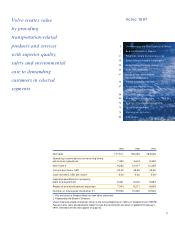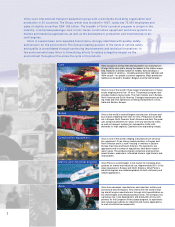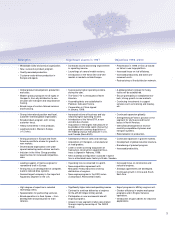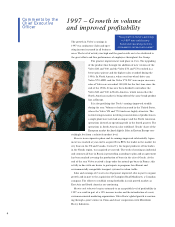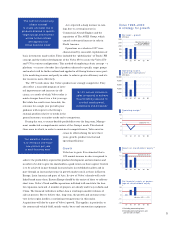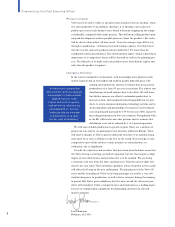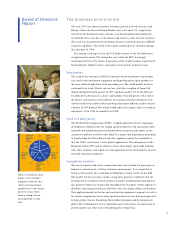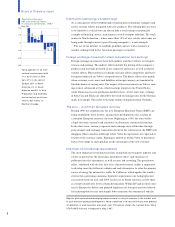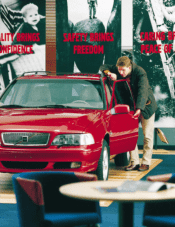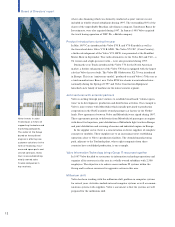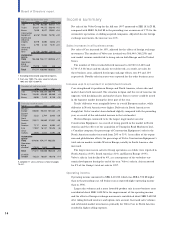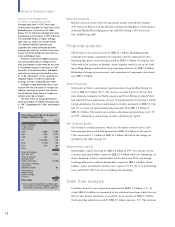Volvo 1997 Annual Report Download - page 8
Download and view the complete annual report
Please find page 8 of the 1997 Volvo annual report below. You can navigate through the pages in the report by either clicking on the pages listed below, or by using the keyword search tool below to find specific information within the annual report.
Product renewal
Volvo has to be able to offer, at any given time, products that are modern, attrac-
tive and competitive. Our ambition, therefore, is to introduce one major new
product per year in each business area, which will mean stepping up the tempo
considerably, compared with earlier practice. This will mean rolling product plan-
ning and development work in parallel processes. Since the products’ life cycles
will be shorter than before, all time saved – from the concept stage all the way
through to production – will mean increased earning capacity. Our objective is
that the cost for each new product concept should be 15% lower than for
comparable earlier specifications. The environmental aspect, which is growing in
importance as a competitive factor, will be factored in early in the planning pro-
cess. The objective is to make each new product more fuel-efficient, lighter and
safer than the product it replaces.
Operating efficiency
In the current competitive environment, with increasingly more players in each
market segment and an even higher and uniform quality, high efficiency is be-
coming a prerequisite for survival. I estimate that an increase in
productivity of at least 5% per year is necessary. The relative cost
disadvantages of small volumes have to be offset. We will there-
fore further increase our efforts to rationalize production, to
increase system- and components interchangeability in our pro-
ducts, to create common information technology systems and to
seek cooperation and partnerships. Our goal is to have reduced
costs of purchased materials by 15% by the year 2000, in part by
increasing procurement in low-cost countries. Deregulation with-
in the EU will involve new sales patterns and we estimate that
distribution costs can be reduced by 1 to 4 percentage points.
We will also establish production in growth regions. There are a number of
projects in Asia and we are planning for new factories in Eastern Europe. There
will also be changes in Volvo’s present industrial structure. O ur manufacturing
units must be at least as efficient as the best in the world. Non-strategic or non-
competitive units will be subject to such measures as rationalization, co-
ordination, sale or liquidation.
Overall, the objectives and activities that have been described here mean that
the Volvo Group is entering a period of expansion, but one that requires a high
degree of cost-effectiveness and precision if it is to be realized. We are facing
a strenuous task over both the short and long term. Nineteen ninety-eight will
thus be the year when Volvo introduces products whose reception in the market
will affect the Group in the new millennium. The phasing out of the Volvo 90
series and the launching of Volvo’s new large passenger car involve a very sub-
stantial changeover in production, as well as lower revenues during the running-
in period. But I have great confidence that the new car and the other new pro-
ducts will strengthen Volvo’s competitiveness and reputation as a leading manu-
facturer of transportation equipment for demanding customers in selected
market segments.
Leif Johansson
February, 18 1998
6
Com m ents by the Chief Executive Officer
“ In the current com petitive
environm ent, with increasingly
more players in each m arket
segment and an even
higher and uniform quality,
high efficiency is becom ing
a prerequisite for survival.
I estim ate that an increase
in productivity of at least
5% per year is necessary.”



